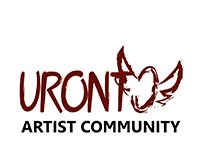
10 Sep URONTO’s Int. Residency begins at Sunamganj
-Culture Desk, Daily Observer
The term “site-specific art” is still quite controversial because there is dissention as to whether it applies to work made specifically for a site or to work made in response to and while encountering a site. Or is the term applicable to both. This may seem like a semantic point, but the art works that result from it are profoundly different. In the ongoing episodes of exchange programmes, URONTO claims to be framing the dimensions and fundamentals of “site-responsive art” in all its forms. One of the purposes of working site-responsively is to “open out” the scope of audience beyond the gallery convention, the programme is designed to find out if it is possible to truly achieve a genuinely mixed audience, given that the whole rationale for bourgeois art institutions is to create and preserve elites?
In the passing September and coming October, URONTO has decided to host its 6th and 7th episodes, back-to-back, in the Sunamganj District, Sylhet Division, and Bangladesh. Both episodes will gather more than 45 artists from nine countries: India, Belgium, Germany, Serbia, New York, Egypt, Netherlands, Brazil, and Bangladesh. The 6th season will see 24 artists create new work at the Gourarang Palace, and during the 7th Season, 26 artists will engage with the Shukhair Palace, both in Sunamganj district in Bangladesh.
The main performance period of 6th Episode will be 29 September – 05 October 2017 and the 7th Episode will take place from 09-15 October 2017. The open Studio Days will run on 05, 06 October and 15, 16 October 2017 on the Working Sites.
URONTO is an artist-led initiative who hosts site-specific residential art exchange programs within disused or abandoned spaces and heritage buildings outside of Dhaka, till now in locations across Bangladesh. URONTO’s activities not only provide much-needed opportunities for Bangladeshi artists to expand their working practice and collaborate with international artist, but through each residency, they create a body of alternative documentation about the history of the selected site before it is demolished and forgotten.
In the making, the mission becomes an aesthetical activism which doesn’t limit its actions to one particular media nor does it stay with a particular type of audience.
Believing that when a community loses a building it loses part of its identity, Uronto sensitively connects with the local community around each of its sites in an attempt to reconnect them with the space through workshops run by the selected artists.


No Comments